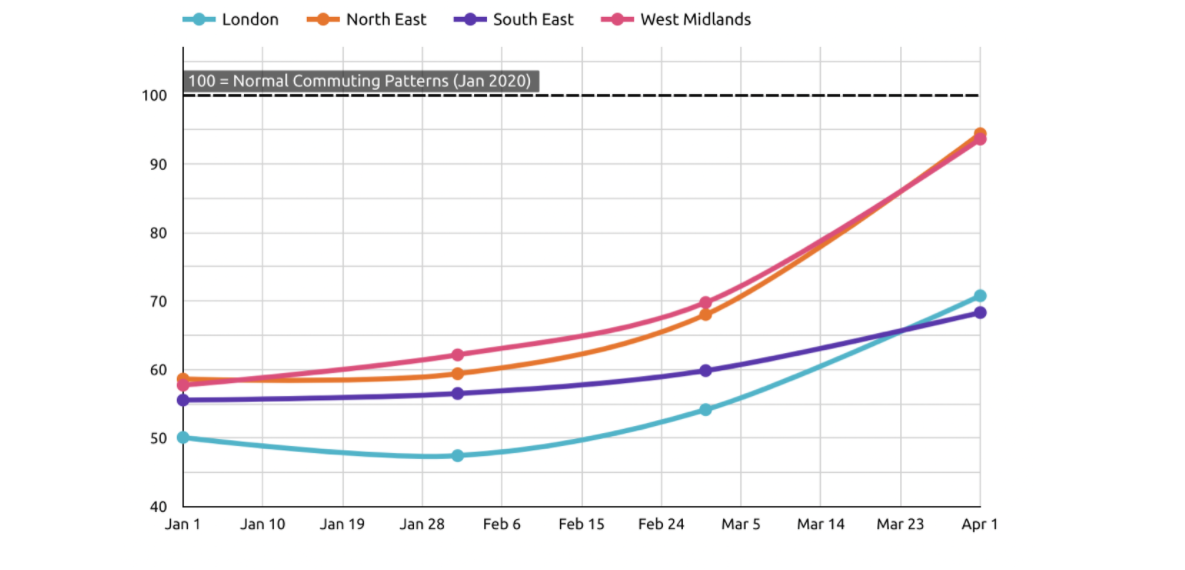
Towns and cities in the UK’s North East, North West and West Midlands show early signs of getting back to previous working patterns, with high-frequency geo-location data revealing a sharp rise in commuting practices during April as lockdown restrictions eased.
The data measures the extent to which residents of UK towns and cities travel beyond their home environments on a frequent basis – a traditional commuting pattern. This metric is then indexed to the equivalent value for January 2020 to show change over time.

The outcome highlights wide differences in working practices across the UK, with 15 out of the top 20 centres showing positive change from March to April located in the North or West Midlands. By contrast, towns and cities in London’s commuter-belt and across the South show little or no change yet.
In particular, Bury, Dudley, Nuneaton and South Shields all show commuting patterns rise by between 40 and 60% by this measure in April, and are among the first towns in the UK to reach the equivalent of levels last seen before the pandemic in January 2020.
The home counties in the south have experienced a barely noticeable change, with travel from Reading rising by just 0.4 – and Maidstone and Cambridge have seen rises of just 2.1% and 6.7% respectively.
To learn more about the data behind this article and what Huq has to offer, visit https://huq.io/.







Sign up to receive our stories in your inbox.
Data is changing the speed of business. Investors, Corporations, and Governments are buying new, differentiated data to gain visibility make better decisions. Don't fall behind. Let us help.



















Sign up to receive our stories in your inbox.
Data is changing the speed of business. Investors, Corporations, and Governments are buying new, differentiated data to gain visibility make better decisions. Don't fall behind. Let us help.











